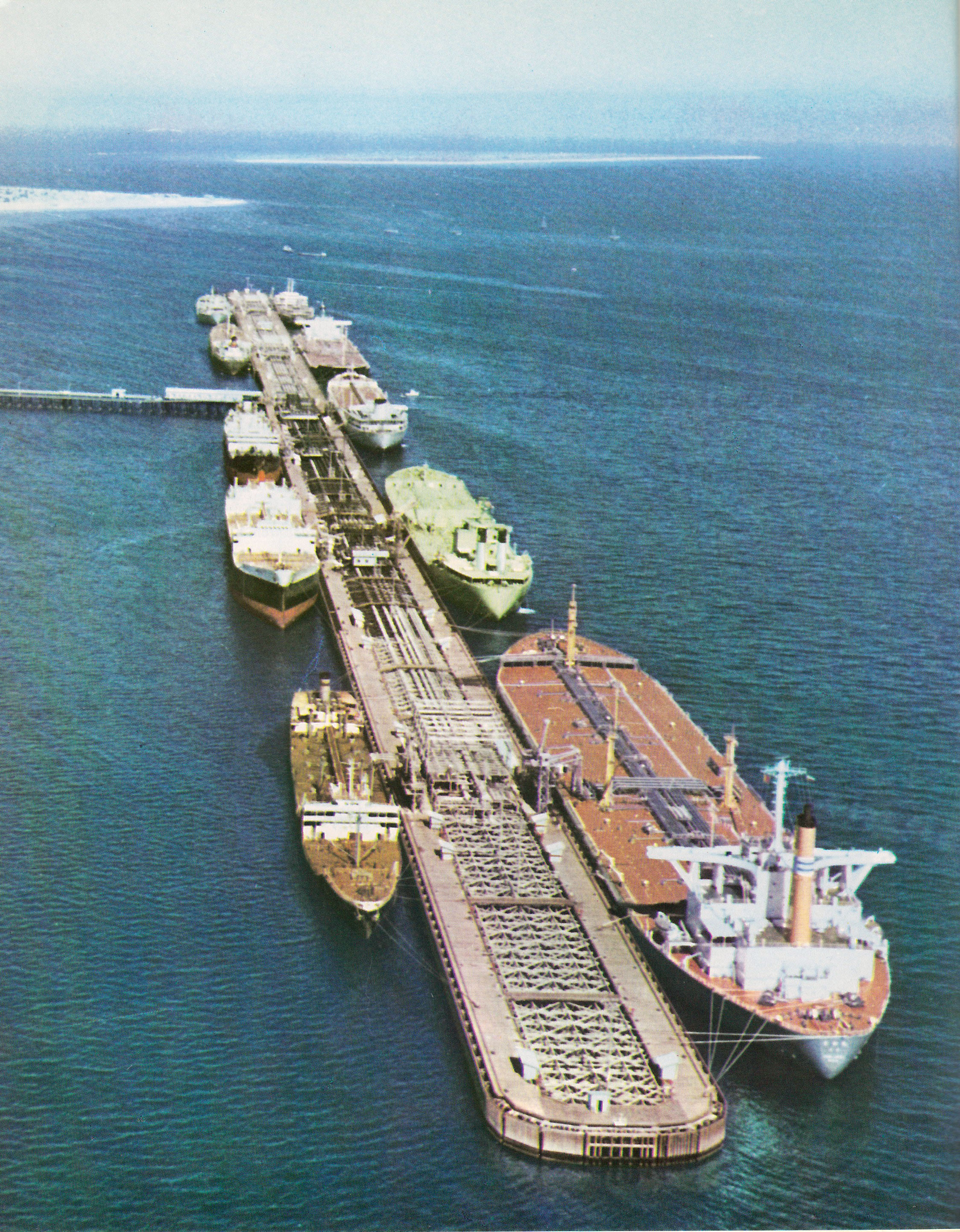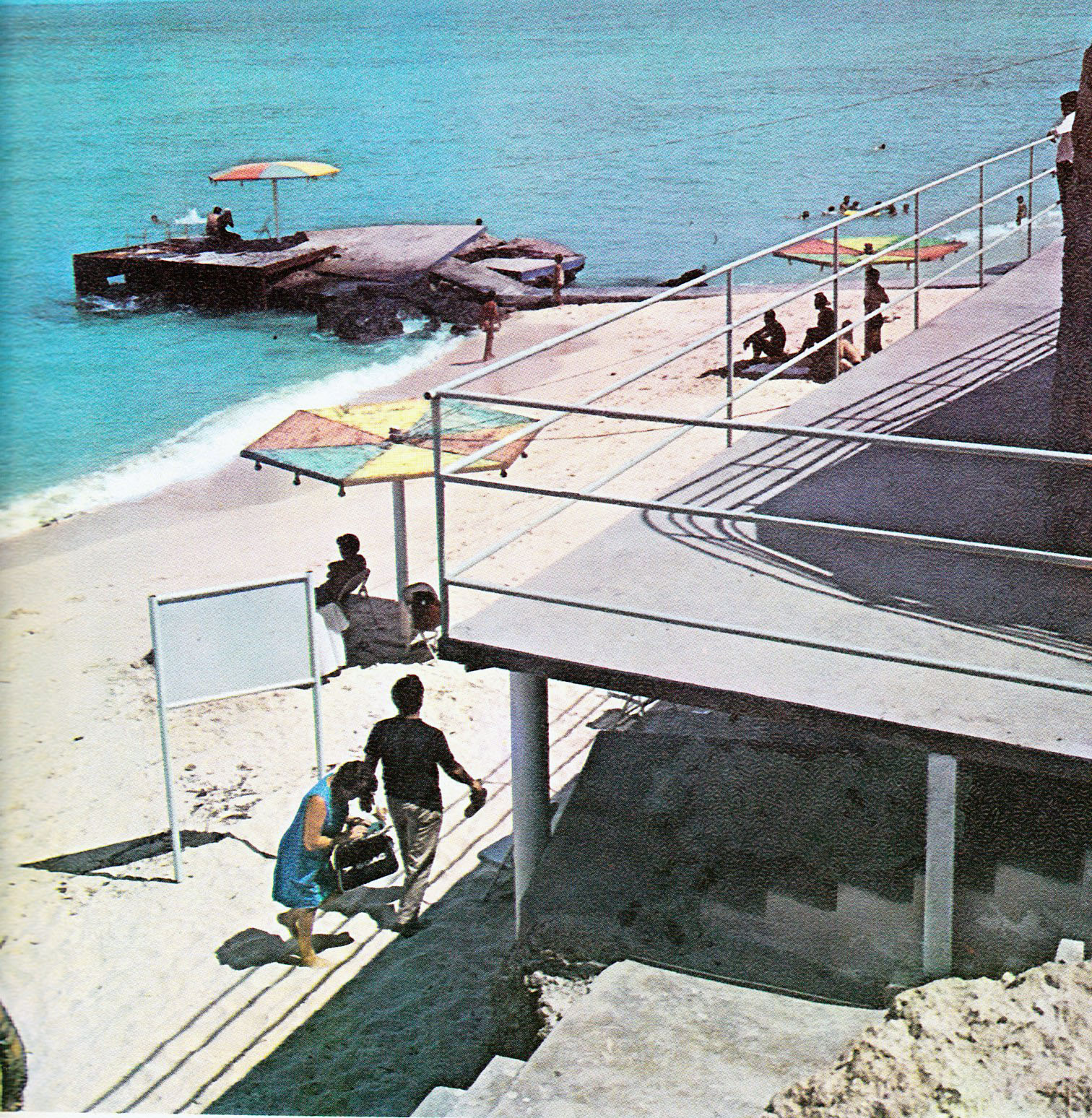Kharg Island on:
[Wikipedia]
[Google]
[Amazon]
Kharg or Khark Island ( fa, جزیره خارک) is a continental island in the
 Mentioned in the '' Hudud al-'Alam'' as a good source for pearls around 982 AD, Khark was visited by the French traveller Jean de Thévenot in 1665, who recorded trade at the time with Isfahan and
Mentioned in the '' Hudud al-'Alam'' as a good source for pearls around 982 AD, Khark was visited by the French traveller Jean de Thévenot in 1665, who recorded trade at the time with Isfahan and  Once the world's largest offshore crude oil terminal and the principal sea terminal for Iranian oil, the Khark Island facilities were put out of commission in the fall of 1986. Heavy bombing of the Khark Island facilities from 1980 through 1988 by the
Once the world's largest offshore crude oil terminal and the principal sea terminal for Iranian oil, the Khark Island facilities were put out of commission in the fall of 1986. Heavy bombing of the Khark Island facilities from 1980 through 1988 by the
Persian Gulf
The Persian Gulf ( fa, خلیج فارس, translit=xalij-e fârs, lit=Gulf of Fars, ), sometimes called the ( ar, اَلْخَلِيْجُ ٱلْعَرَبِيُّ, Al-Khalīj al-ˁArabī), is a mediterranean sea in Western Asia. The bod ...
belonging to Iran
Iran, officially the Islamic Republic of Iran, and also called Persia, is a country located in Western Asia. It is bordered by Iraq and Turkey to the west, by Azerbaijan and Armenia to the northwest, by the Caspian Sea and Turkmeni ...
. The island is located off the coast of Iran and northwest of the Strait of Hormuz. Its total area is . Administered by the adjacent coastal Bushehr Province, Khark Island provides a sea port for the export of oil and extends Iranian territorial sea
The term territorial waters is sometimes used informally to refer to any area of water over which a sovereign state has jurisdiction, including internal waters, the territorial sea, the contiguous zone, the exclusive economic zone, and poten ...
claims into the Persian Gulf oil fields. Located on Khark Island is Khark, the only city in the Khark District.
History
 Mentioned in the '' Hudud al-'Alam'' as a good source for pearls around 982 AD, Khark was visited by the French traveller Jean de Thévenot in 1665, who recorded trade at the time with Isfahan and
Mentioned in the '' Hudud al-'Alam'' as a good source for pearls around 982 AD, Khark was visited by the French traveller Jean de Thévenot in 1665, who recorded trade at the time with Isfahan and Basra
Basra ( ar, ٱلْبَصْرَة, al-Baṣrah) is an Iraqi city located on the Shatt al-Arab. It had an estimated population of 1.4 million in 2018. Basra is also Iraq's main port, although it does not have deep water access, which is han ...
. In 1753 the Dutch Empire established both a trading post and a fort on the island after securing perpetual ownership of the island from Mir Nasáir, the Arab ruler of Bandar Rig, in return for a present of 2000 rupees. In 1766 the Dutch fort was captured by Mir Mahanna, the governor of Bandar Rig.
The island was briefly occupied in 1838 by the British to block the Siege of Herat (1838) but was soon returned. Amoco built and operated the oil terminal on the island. Its property was expropriated after the revolution.
 Once the world's largest offshore crude oil terminal and the principal sea terminal for Iranian oil, the Khark Island facilities were put out of commission in the fall of 1986. Heavy bombing of the Khark Island facilities from 1980 through 1988 by the
Once the world's largest offshore crude oil terminal and the principal sea terminal for Iranian oil, the Khark Island facilities were put out of commission in the fall of 1986. Heavy bombing of the Khark Island facilities from 1980 through 1988 by the Iraqi Air Force
The Iraqi Air Force (IQAF or IrAF) ( ar, القوات الجوية العراقية, Al Quwwat al Jawwiyah al Iraqiyyah}) is the aerial warfare service branch of the Iraqi Armed Forces. It is responsible for the defense of Iraqi airspace as well ...
during the Iran–Iraq War
The Iran–Iraq War was an armed conflict between Iran and Ba'athist Iraq, Iraq that lasted from September 1980 to August 1988. It began with the Iraqi invasion of Iran and lasted for almost eight years, until the acceptance of United Nations S ...
all but destroyed most of the terminal facilities. Khark Island was situated in the middle of the Darius Oilfield, also destroyed by the intensive bombing. Repair to all facilities has been very slow, even after the war ended in 1988. The events experienced by this island gave rise to the dispute in the English contract law case ''The Kanchenjunga'' 9901 Lloyd's Rep 391, regarding the conditions for repudiatory breach of contract and a claimant's right to elect to accept repudiation.
In 2009, Iran exported and swapped 950 million barrels of crude oil via southern Khark oil terminal.
Archaeology
The first archaeological evidence of human occupation on Khark island was reported by Captain A. W. Stiffe in 1898, with studies published about his discoveries by F. Sarre and E. Herzfeld in 1910. They discovered two rock-cut chambered tombs featuring arched entranceways to a main chamber with vestibule from which spawned around twenty smaller chambers. The southern tomb is deep and features a relief of a reclining man drinking in theSeleucid
The Seleucid Empire (; grc, Βασιλεία τῶν Σελευκιδῶν, ''Basileía tōn Seleukidōn'') was a Greek state in West Asia that existed during the Hellenistic period from 312 BC to 63 BC. The Seleucid Empire was founded by the ...
and Parthian styles of Palmyra
Palmyra (; Palmyrene: () ''Tadmor''; ar, تَدْمُر ''Tadmur'') is an ancient city in present-day Homs Governorate, Syria. Archaeological finds date back to the Neolithic period, and documents first mention the city in the early secon ...
along with a damaged relief suggested to feature Nike
Nike often refers to:
* Nike (mythology), a Greek goddess who personifies victory
* Nike, Inc., a major American producer of athletic shoes, apparel, and sports equipment
Nike may also refer to:
People
* Nike (name), a surname and feminine give ...
on the face of a sphere-topped column. Mary-Joseph Steve has argued that the architecture of the tombs is more reminiscent of Nabataean
The Nabataeans or Nabateans (; Nabataean Aramaic: , , vocalized as ; Arabic: , , singular , ; compare grc, Ναβαταῖος, translit=Nabataîos; la, Nabataeus) were an ancient Arab people who inhabited northern Arabia and the southern L ...
architecture at Petra than anything Palmyrene.Steve, M.-J., "Sur l'île de Khârg dans le golfe Persique," Dossiers d'Arche‚ologie 243, pp. 74-80, 1999.
Another eighty three rock cut tombs and sixty two megalithic tombs have been studied on Kharg. The rock-cut tombs fall into four categories; single chambered, shallow tombs of varying shape, pit burials and excavated multi-chambered complexes. Steve also noticed the presence of several Nestorian
Nestorianism is a term used in Christian theology and Church history to refer to several mutually related but doctrinarily distinct sets of teachings. The first meaning of the term is related to the original teachings of Christian theologian ...
style crosses at some of the tombs.
There are also ruins of a coarse stone temple
A temple (from the Latin ) is a building reserved for spiritual rituals and activities such as prayer and sacrifice. Religions which erect temples include Christianity (whose temples are typically called churches), Hinduism (whose temples ...
on the island measuring around square with a plastered altar for fire in the centre.
A Christian church complex or ancient monastery
A monastery is a building or complex of buildings comprising the domestic quarters and workplaces of monastics, monks or nuns, whether living in communities or alone ( hermits). A monastery generally includes a place reserved for prayer whi ...
of some by is also located on the island featuring a chapel, nineteen monk
A monk (, from el, μοναχός, ''monachos'', "single, solitary" via Latin ) is a person who practices religious asceticism by monastic living, either alone or with any number of other monks. A monk may be a person who decides to dedica ...
s cells, library and courtyard.
Achaemenid inscription
On November 14, 2007, acuneiform
Cuneiform is a logo-syllabic script that was used to write several languages of the Ancient Middle East. The script was in active use from the early Bronze Age until the beginning of the Common Era. It is named for the characteristic wedge-sh ...
inscription dating back to Achaemenid era
The Achaemenid Empire or Achaemenian Empire (; peo, 𐎧𐏁𐏂, , ), also called the First Persian Empire, was an ancient Iranian empire founded by Cyrus the Great in 550 BC. Based in Western Asia, it was contemporarily the largest emp ...
was discovered on Kharg Island in Old Persian. The inscription is carved on a coral rock in Old Persian semi-syllabic cuneiform signs. Despite the usually well-ordered regular system of Achaemenid inscriptions, this one is in an unusual order written in five lines.
The linguist Habib Borjian Habib Borjian is a linguist who specializes in a wide variety of matters, including historical linguistics, language documentation, philology and Iranian languages and literature. He was educated at Columbia University, the University of Tehran and ...
explains that if the inscription is authentic, combined with the island's known history of '' kariz'' usage, "which came about under the Achaemenid rule in the Near East (550–330 BCE)", it can be suggested that there was a Persian
Persian may refer to:
* People and things from Iran, historically called ''Persia'' in the English language
** Persians, the majority ethnic group in Iran, not to be conflated with the Iranic peoples
** Persian language, an Iranian language of the ...
colonisation of Kharg under the Achaemenids. The Iranian dialect of the Persian settlers of the Achaemenid period may have in turn been the ancestor of the Khargi language, with Borjian adding that "there is no contradicting evidence to make this hypothesis implausible".
On May 31, 2008, the inscription was seriously damaged by unknown vandal(s). They destroyed it with a sharp object, such that about 70 percent of the inscription was seriously damaged. The nature of the damage indicates that it was done deliberately.
The 17th-century French traveller Jean de Thévenot noted the presence of qanat (i.e. kariz) on the island that would have provided ancient irrigation.
In popular culture
The island appears with a SAM radar installation on it in the Sega Genesis flight simulator F-15 Strike Eagle II in the Persian Gulf mission map. The island is featured as a playable map in DICE's ''Battlefield 3
''Battlefield 3'' is a 2011 first-person shooter video game developed by DICE and published by Electronic Arts for Microsoft Windows, PlayStation 3 and Xbox 360. It is a direct sequel to 2005's ''Battlefield 2''.
In ''Battlefield 3''s campaign, ...
'' video game, having some resemblance to the real island.
It also appears in '' Delta Force: Black Hawk Down – Team Sabre''.
See also
* List of lighthouses in IranReferences
{{Lighthouse identifiers , qid2=Q106112543 Megalithic monuments in the Middle East Islands of Iran Bushehr County Islands of the Persian Gulf Archaeological sites in Iran Landforms of Bushehr Province